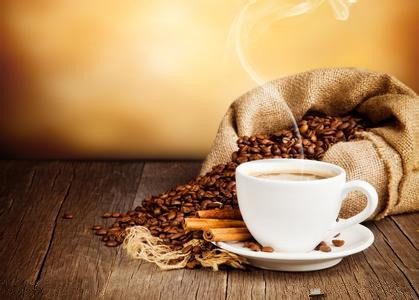Principle and classification of coffee roaster

Commercial roaster
The manufacturing principle of commercial roaster is mainly divided into three types: direct fire type, semi-hot type and hot air type. At present, the latter two kinds of roasting are the best and are the mainstream in the selected coffee market.
1. Direct fire type
The earliest baking tools used by human beings are all direct fire, that is, the drum is heated by fire, and then heat transfer to the raw beans in the cylinder. Although, the motor keeps turning the drum and stirring the coffee beans in the cylinder, in an attempt to make each coffee bean touch the hot iron wall evenly, so as to achieve the goal of balanced baking. However, this baking method still has many disadvantages: the heat conduction speed of iron is not fast, so it must take more time to complete baking; on the outside of the burning drum, the hot gas dissipates in the air, which is a pity that it cannot be well utilized; when the raw bean touches the inner wall of the drum for too long, it is easy to be scorched, resulting in bitterness and scorching taste. When baking, there are a lot of crumbs burst out, left in the tube is easy to adhere to the surface of coffee beans, will make the flavor become chaotic.
2. Semi-hot air direct fire type
Between 1870 and 1920, the German Fan Guban improved and manufactured the barrel roaster. In his baking theory, he refers to coffee beans that bring hot air into roasting. In 1907, the German-made Perfekt roaster began to introduce this concept, using gas heating, there is an air pump, half of the hot gas into the drum, half to the outer barbecue drum. Up to now, roller baking in Germany is still widely used, and the country's Probat drum roaster is famous all over the world.
The general roaster uses gas or electricity as the heat source. In 1987, Derek Company of Idaho took the lead in using the infrared heat source activated by gas, which made the temperature control more accurate and well received, and became the first brand in North America.
Today's drum roasters are almost all semi-hot air direct fire type, on the one hand directly heat the drum with the fire source, on the other hand bring the hot air into the drum. The hot air blown into the drum can increase the heating speed and blow away the debris, thus producing balanced and clean coffee beans.
3. Hot air type
In the 20th century, some people thought of using hot air to bake coffee beans, so that without iron barrier, the heat source can be passed more directly to raw beans and improve baking efficiency. In 1934, the Thermonro roaster (jabez burns thermalo) made by the Bourne Company in the United States, that is, a large type of hot air machine, is still used by some large baking plants in the United States.
4. Air bed roaster
The hot air roaster still adopts the drum design to achieve the purpose of balanced baking by rolling and turning the raw beans. However, some people think of using hot air to move raw beans and let them float up and down, breaking the concept of rollers. In 1976, the American Michael Schweitz designed the air bed roaster. In an airtight container, he let the hot air blow from the bottom up, causing the raw beans to float up and down in the container, and it was not until the baking was finished that he poured out the cooling tray outside the container to cool. In Australia, the well-known coffee expert Iomberstein has a similar design and manufacture.
In the process of baking, the moisture in the beans is evaporated less and less, and the mass becomes lighter and lighter. If you use this kind of roaster, the heavy ones will fall quickly and accept the baking of hot air again, so that even coffee beans can be baked up and down repeatedly. However, the lack of metal drum burning, some people will feel that there is a lack of flavor.
Household baking machine
In recent years, there has been an upsurge of roasting a small amount of coffee beans, and there are many household roasters on the market, and it has become quite simple to roast coffee beans by themselves. At present, household roasters can be divided into three types: self-ignition type, hot air type and drum type. Although these are not very sophisticated professional models, as long as they are handled properly, the roasted coffee beans are still mellow.
1. Direct firing: ceramic roaster or pan
Direct-fired appliances are the simplest and can be pans or Japanese-made long-handle ceramic roasters. The ceramic roaster is closed, has the effect of stewing, and can bake coffee with delicious and complex taste; its taste is the most natural and thick. Nowadays, this kind of ceramic roaster is often available outside Japan. The effect of the pan is not good, so it is not recommended to use this appliance.
The baking method of the ceramic roaster is very simple, first put the raw beans into the pot, and then shake the long handle on the gas stove. The baker can control the firepower and the baking time by himself.
The disadvantage of this tool is that there is no hot air to blow off the silver film and debris, so it is more likely to smell. In addition, it has no cooling function. After baking, you have to pour the beans into a basket and cool them with a fan or electric fan.
2. Hot air type: hot air type popcorn machine or hot air type household roaster
The hot air popcorn machine was originally used for popcorn, but then someone used it to bake coffee beans, and it worked well, and it was all the rage for a while. Its disadvantages are: it does not have the function of collecting debris, the hot air makes the debris film fly everywhere, and it takes effort to clean it up afterwards; and the heating speed is so fast that the first burst can be heard in about 4-5 minutes, the water does not completely evaporate, and the taste is not full enough. Slightly sour. The popcorn machine can bake 100 grams of raw beans at a time, but not enough or too much. It does not have the function of automatic shutdown, so you have to look after it when you use it, otherwise it may burn the whole pot of beans.
In areas where coffee is popular, these machines can be bought in coffee stores or websites. When in use, as long as the raw beans are put in, the baking degree is set, and the start button is pressed, which is completed automatically from baking to cooling.
Hot air household roasters have the function of collecting debris and cooling, which can produce clean baked beans. The ideal baking degree setting should be to judge the temperature and then stop baking automatically. However, the baking setting function of these machines is just a timer, and when the time is up, it will automatically switch to the cooling stage. Because the temperature in winter is very different from that in summer, and the time required for roasting coffee is also different, there may be a difference of more than one scale when setting the roasting scale.
3. Drum type household roaster
The traditional roaster is a drum type, which is roasted by the fire source. This kind of roasting method has the characteristic of stewing, which will make the coffee bean flavor more mature and taste fuller, which is similar to the effect of pottery pot. At present, there is a kind of AIpenrose machine made by Swissmar company in the market, which belongs to the drum roaster for household use. It can bake half a pound of coffee beans at a time, and the baking time (including cooling and releasing) takes about 21-25 minutes. The deeper the baking degree, the longer it takes.
When in use, as long as the raw beans are put in, the baking degree is set, and the start button is pressed, which is completed automatically from baking to cooling. The baking degree recommended by this machine is based on half a pound of raw beans. If the baking amount is less than half a pound, the actual baking time is short, then man-made intervention is needed. When the desired baking degree is reached, press the "cooling" button, otherwise a pot of beans will be burned out; if the baking amount exceeds half a pound, uncooked conditions may occur. In addition, its heating rate is slow, about 13-15 minutes will hear the first burst sound, so there is enough time to evaporate water, and then enter the high temperature cracking stage, so that the coffee beans can be ripe inside and outside, forming a rich texture. Therefore, most bakers think that it is close to commercial professional roasters, so Alpenrost has a good market in North America.
The baking degree setting function of this machine is only a timer, and when the time is up, it will automatically switch to the cooling stage. Due to the wide difference in temperature between winter and summer, the time required to bake coffee is also different, and there may be a difference of more than one scale when setting the roasting scale.
In winter, the heating rate is too slow for this machine to make half a pound of raw beans as baked as Espresso. Therefore, if you want to have heavy-roasted coffee beans, you should reduce the amount moderately. In addition, its debris collection function is only a small plate at the bottom, so that the crumbs and silver film automatically fall into the plate, and there is no hot air blowing away the detritus, so there are a lot of crumbs in baked beans, so it is recommended to use iron mesh to remove the crumbs, otherwise it will produce more smells; secondly, there are more dead corners inside, and the smoke of stew is easy to leave oil, and the cleaning work after the event is very time-consuming.
Important Notice :
前街咖啡 FrontStreet Coffee has moved to new addredd:
FrontStreet Coffee Address: 315,Donghua East Road,GuangZhou
Tel:020 38364473
- Prev

The common way of roasting coffee beans
Coffee roasting, hundreds of years of history in the past, people do not have these scientific tools, and finally want to determine how to heat the whole exothermic reaction? Simply, all of this will be used to determine the appearance and high-temperature baking process. The roasting process can be divided into four stages: bean steaming 1 training stage: 00 10 minutes; beans-140C, which is the most important endothermic reaction process of coffee and will be expanded in a slow period.
- Next

Why do merchants overroast coffee beans?
1. Deep roasting will make guests who don't know much about coffee feel very coffee-flavored; 2, lower requirements for raw coffee beans, and even do not have to go to the selection of several carefully selected coffee beans to match. The flavor of coffee produced by deep roasting of any kinds of coffee beans is similar, because deep roasting will burn off most of the flavor of coffee beans. 3. Low requirements for coffee machine operators
Related
- Beginners will see the "Coffee pull flower" guide!
- What is the difference between ice blog purified milk and ordinary milk coffee?
- Why is the Philippines the largest producer of crops in Liberia?
- For coffee extraction, should the fine powder be retained?
- How does extracted espresso fill pressed powder? How much strength does it take to press the powder?
- How to make jasmine cold extract coffee? Is the jasmine + latte good?
- Will this little toy really make the coffee taste better? How does Lily Drip affect coffee extraction?
- Will the action of slapping the filter cup also affect coffee extraction?
- What's the difference between powder-to-water ratio and powder-to-liquid ratio?
- What is the Ethiopian local species? What does it have to do with Heirloom native species?

